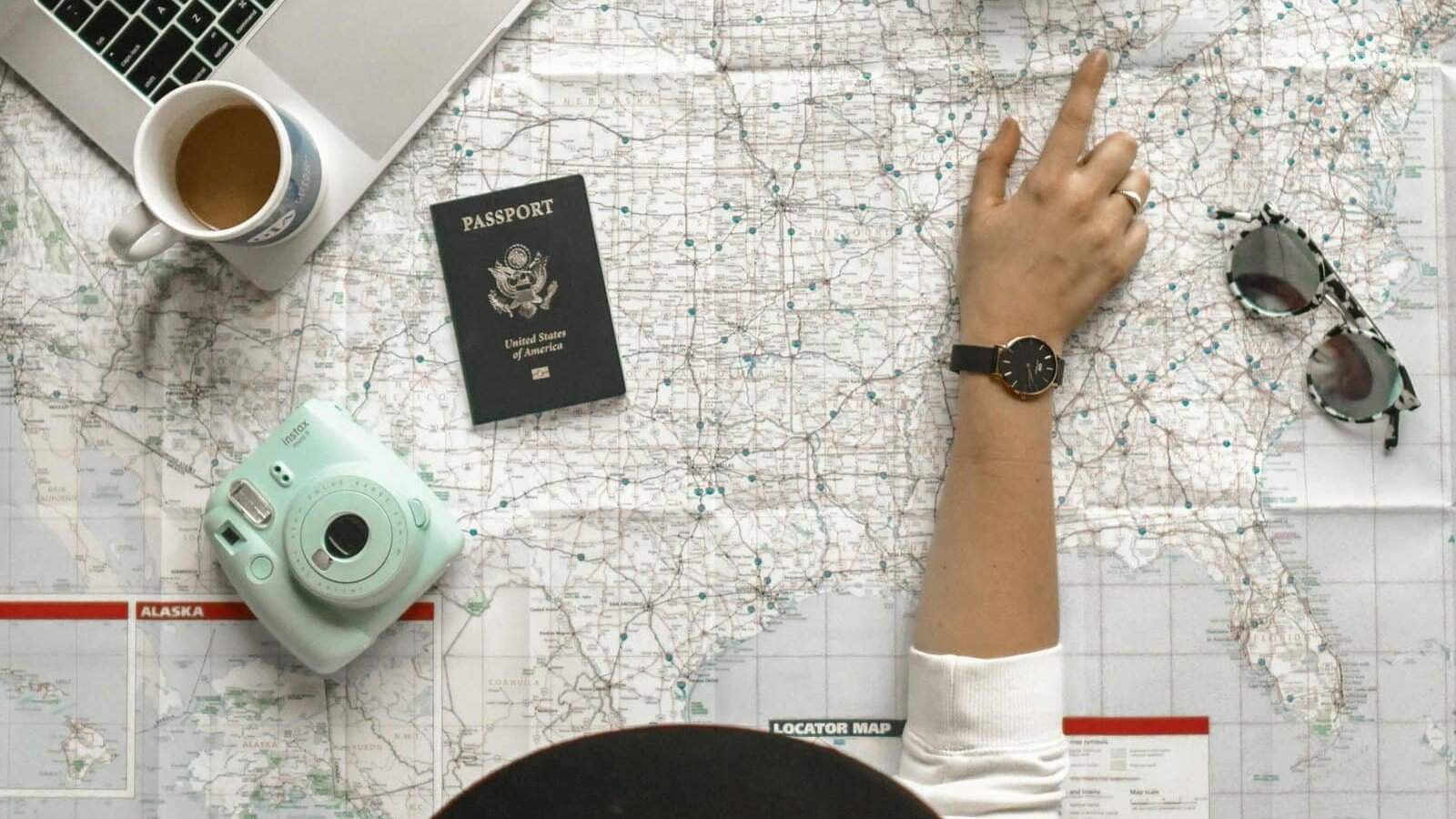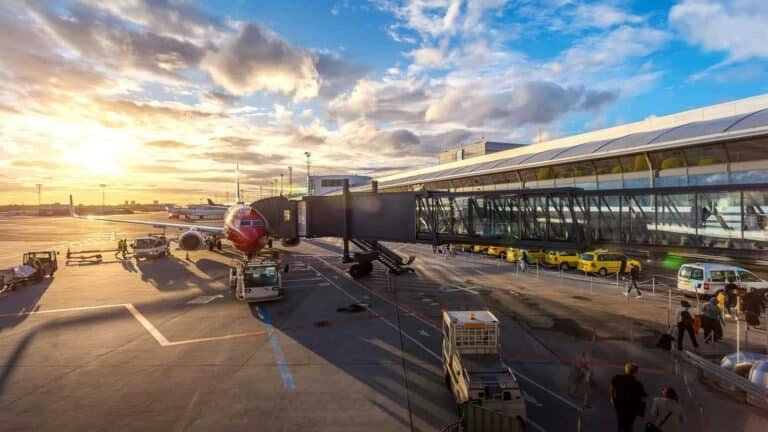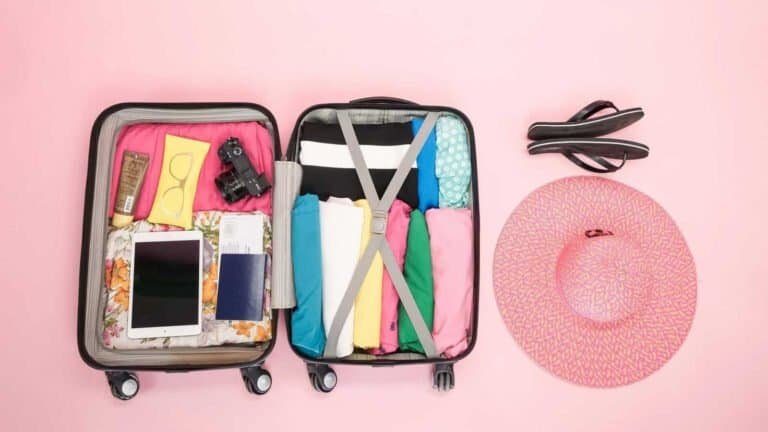Ultimate Budget Travel Guide: See the World Without Breaking the Bank

Did you know that 76% of travelers cite budget concerns as their primary obstacle to exploring the world? Yet, some of the most memorable travel experiences don’t require emptying your savings account! As someone who’s backpacked across 30+ countries on a shoestring budget, I’m living proof that amazing adventures are possible without financial strain. The secret lies in smart planning, local insights, and knowing exactly where your money will stretch furthest. Whether you’re dreaming of pristine beaches, historic cities, or remote mountain trails, this comprehensive budget travel guide will equip you with everything you need to transform those Pinterest travel boards into real-life experiences—without the financial hangover afterward!
Understanding Budget Travel Fundamentals
Budget travel isn’t just about pinching pennies—it’s about making intentional choices that align with your priorities. Unlike “cheap travel,” which might simply mean cutting corners wherever possible, budget travel involves strategic decisions about where to save and where to splurge.
“I used to think budget travel meant uncomfortable hostels and instant noodles for every meal,” says Maria, a seasoned traveler from Canada. “But it’s really about being mindful with your money so you can travel longer and experience more.”
This mindset shift is crucial. When you embrace budget travel, you’re prioritizing experiences over luxury accommodations. After all, how much time do you actually spend in your hotel room?
“I stayed in a basic guesthouse in Thailand for $15 a night, which allowed me to afford scuba diving lessons—something I’d dreamed of for years,” shares Alex, a budget traveler from the UK. “My friends who insisted on a resort missed out because their money went to fancy lobbies rather than memories.”
Setting realistic budget expectations is essential too. Your daily spending will vary dramatically between Tokyo and Hanoi, for instance. Research typical costs for your destination and be honest about your travel style. Some travelers are happy with street food and dorm rooms, while others need private bathrooms and occasional restaurant meals.
Slow travel—spending more time in fewer places—can dramatically reduce your daily costs while deepening your experience. When you’re not rushing between destinations, you can cook more meals, find local deals, and sometimes negotiate weekly or monthly accommodation rates.
Planning Your Budget-Friendly Trip
Timing is everything when it comes to saving money on travel. For flights, the general sweet spot is booking 1-3 months ahead for domestic trips and 2-5 months for international journeys. However, this varies by destination and season.
“I use Google Flights’ price tracking feature to watch fare trends,” explains Jamie, a budget travel enthusiast. “I’ve saved hundreds by booking when the algorithm shows prices dropping.”
When researching prices, don’t limit yourself to one platform. Compare options across multiple sites like Skyscanner, Momondo, and direct airline websites. The same applies to accommodations—check Booking.com, Airbnb, Hostelworld, and local options.
“I once found a hotel room for $65 on Booking.com that was $112 on the hotel’s own website,” recalls Priya, who travels throughout Southeast Asia regularly.
Travel rewards can dramatically reduce costs if you’re strategic. Even casual travelers can benefit from a good travel credit card that offers points on everyday purchases.
“We flew business class to Europe using points accumulated mostly from grocery shopping and paying utilities,” says Marcus, who travels with his partner twice yearly. “We’re not hardcore points hackers—we just chose the right card and used it consistently.”
Building flexibility into your itinerary creates room for cost-saving opportunities. Can you shift your travel dates by a few days if flights are cheaper? Are you open to visiting a neighboring city first if it’s less expensive to fly into?
Today’s travelers have countless tools at their disposal. Apps like Hopper predict flight prices, TrustedHousesitters connects you with free accommodation opportunities, and TrabeePocket helps track expenses in multiple currencies.
Affordable Destinations Around the World
Some regions consistently offer exceptional value for travelers. Southeast Asia—particularly Vietnam, Indonesia, and Thailand—tops many budget travelers’ lists with comfortable accommodations starting around $10-20 per night and delicious meals for $2-5.
“I spent a month in Vietnam on what would have covered just one week in Paris,” says Leo, who documented his travels on a popular YouTube channel. “And honestly, that month in Vietnam was more transformative and joy-filled than any luxury vacation I’ve taken.”
Central and South America also offer tremendous value. Countries like Mexico, Colombia, Bolivia, and Guatemala provide rich cultural experiences at a fraction of North American or European prices. A typical daily budget might range from $30-50 including accommodations, food, and activities.
Eastern Europe remains one of the best value regions on the continent. While Prague and Budapest have seen prices rise with popularity, countries like Albania, Romania, and North Macedonia offer stunning landscapes, fascinating history, and welcoming locals at very reasonable prices.
Emerging destinations often provide the best combination of authenticity and value. Consider places like Georgia (the country), Malaysia’s less-visited regions, or Uruguay in South America.
“I spent two weeks in Georgia’s wine region last year,” shares Nadia, a budget traveler from Germany. “The guesthouses were around $25 a night including incredible homemade breakfasts, wine tastings were often free or very cheap, and the hiking was world-class.”
Even traditionally expensive destinations have budget-friendly seasons. Japan in late November, Paris in February, or New York in January might mean cooler weather but significantly lower prices and fewer crowds.
Accommodation Hacks for the Budget Traveler
Your accommodation choice dramatically impacts your overall travel budget. Hostels remain a staple for solo travelers, with dorm beds ranging from $5 in Southeast Asia to $25-40 in Western European capitals. Many now offer private rooms at rates still below budget hotels.
“I was hesitant about hostels in my 40s,” admits Carlos, who took a sabbatical to travel through Latin America. “But modern hostels often have quieter ‘mature’ sections, and the social aspect helped me make friends and find travel companions.”
Homestays provide cultural immersion along with savings. Platforms like Airbnb and Booking.com list many homestay options, but local platforms sometimes offer better prices.
For longer stays, house-sitting can provide free accommodation in exchange for caring for someone’s home and possibly pets. Sites like TrustedHousesitters, MindMyHouse, and Nomador connect travelers with homeowners worldwide.
“We house-sat in Melbourne for three weeks in an apartment that would have cost thousands to rent,” explains Kim, who travels part-time with her husband. “All we did was water plants and feed a very affectionate cat. It was a win-win.”
When using traditional accommodation booking sites, look beyond the first page of results and use map view to find options in less central but still convenient neighborhoods. Filter by price and positive reviews rather than searching for the most central locations.
For stays longer than a week, don’t hesitate to ask for discounts directly. Many property owners would prefer a guaranteed longer booking at a slightly lower rate than risking vacant days.
Transportation Strategies That Save Money
Flights typically consume the largest portion of a travel budget, so mastering the art of finding deals is essential. Set price alerts on sites like Kayak or Google Flights for your preferred routes, and be willing to adjust your dates by a few days if it means significant savings.
“I saved $400 by flying on a Tuesday instead of a Saturday,” shares Mia, who regularly travels between the US and Europe. “That paid for an entire week of accommodation in Portugal.”
Consider alternative airports as well. Flying into a secondary city and taking a train or bus to your final destination can sometimes cut costs dramatically.
Once at your destination, research transportation options before arrival. Many cities offer tourist passes that bundle public transportation with attraction discounts. In Tokyo, for instance, the Tokyo Metro Pass can save you substantial money if you plan to use the subway frequently.
“I used to automatically grab taxis from airports,” says Rafael, who now travels differently. “Now I research public transportation options first. The airport express train in Hong Kong is faster than a taxi during rush hour and costs a fraction of the price.”
For intercity travel, buses often provide the best value, especially in countries with well-developed bus networks like Mexico, Turkey, or Spain. In many parts of Asia and Latin America, night buses serve the dual purpose of transportation and accommodation.
Ridesharing services like BlaBlaCar are popular in Europe and parts of Latin America, connecting drivers with empty seats to travelers heading the same direction. This can be significantly cheaper than trains or buses for some routes.
For the truly adventurous, hitchhiking remains common and relatively safe in countries like New Zealand, Iceland, and much of Eastern Europe—though always research local customs and safety considerations before attempting this.
Eating Well Without Overspending
Food is one of travel’s greatest pleasures, and eating well on a budget is entirely possible with the right approach. Street food often represents not just the most affordable option but also the most authentic local cuisine.
“Some of my most memorable meals have cost less than $5,” says Jasmine, a food-focused traveler. “The papaya salad from a street vendor in Bangkok, fresh tacos in Mexico City, or börek in Istanbul—these simple foods tell you so much about a culture.”
To find good street food, look for stands with long lines of locals, clean preparation areas, and high turnover of fresh ingredients. In many countries, food markets offer an array of options in one location, perfect for sampling multiple dishes.
Local markets also provide an opportunity for self-catering. Even without kitchen access, you can assemble picnic meals with bread, cheese, fruits, and local specialties. If your accommodation does have kitchen facilities, cooking a few meals can dramatically reduce your food budget.
“I’m not saying never eat at restaurants,” explains Diego, who blogs about culinary travel. “But be strategic. Maybe have your main meal at lunch when prices are lower, then do something simple for dinner. Or splurge occasionally at special places while keeping most meals budget-friendly.”
Many countries have set “menu del día” (menu of the day) options that offer remarkable value compared to ordering à la carte. In Spain, Portugal, and much of Latin America, these fixed-price lunch menus often include multiple courses and a drink for $8-15.
Food safety remains important. Carry hand sanitizer, observe how food is prepared, and be cautious with raw items or unpeeled fruits in regions known for water quality issues.
Free and Low-Cost Activities in Any Destination
Every city offers countless ways to experience local culture without spending much—or anything at all. Free walking tours operate in most major tourist destinations, typically working on a tip-based model.
“These tours are often run by passionate locals or expats,” notes Hiroshi, who has taken walking tours in over 30 cities. “Besides giving you an orientation to the city, guides can recommend authentic, affordable places to eat and less-known attractions.”
Museums frequently offer free admission days—typically once a week or month. With advance planning, you can enjoy world-class institutions like the Louvre in Paris (free first Sunday of the month) or New York’s Museum of Modern Art (free Friday evenings) without the entrance fee.
Nature provides endless cost-free entertainment. City parks, hiking trails, public beaches, and scenic viewpoints offer authentic experiences that connect you with both locals and the natural environment.
“Some of my most memorable travel moments cost nothing,” reflects Sofia, who prioritizes outdoor experiences. “Watching the sunset from a hilltop in Lisbon, swimming in a waterfall in Mexico, or hiking through rice terraces in Bali—these are the experiences I remember years later, not what hotel I stayed in.”
Local events—from religious festivals to neighborhood markets—provide windows into authentic culture. Check city event calendars, local Facebook groups, or simply ask locals about upcoming happenings.
“I was in Cusco, Peru during a random Tuesday when a massive religious procession filled the streets,” recalls Tyler. “It was completely unplanned and one of the most colorful, musical, joyful experiences of my trip—and completely free to witness.”
Money Management While Traveling
Smart management of your money abroad can save hundreds in unnecessary fees. Start with a credit card that charges no foreign transaction fees and a debit card that reimburses ATM charges, such as those offered by Charles Schwab, Capital One, or various online banks.
“I estimate I’ve saved over $1,000 in ATM fees over years of travel by using the right debit card,” says Ling, who travels extensively through Asia. “Those $5-7 fees add up incredibly quickly otherwise.”
When making purchases, always choose to be charged in the local currency rather than your home currency when given the option on card terminals. The “conversion service” offers poor exchange rates that silently add 3-5% to every purchase.
For cash management, most experienced travelers recommend withdrawing moderate amounts from ATMs rather than exchanging large sums or bringing cash from home. The exchange rates are typically better, and you avoid carrying excess cash.
“I usually withdraw enough for 3-4 days at a time,” explains Karim, who regularly travels through South America. “This balances the risk of carrying too much cash against making too many ATM withdrawals with fees.”
Simple budgeting techniques help stretch your funds. Many travelers use the envelope method—either physically or digitally—allocating specific amounts for different expense categories.
“I use the Trail Wallet app to track spending by category,” shares Nina, who took a gap year to travel. “Setting daily budgets helps me make informed choices rather than suddenly discovering I’ve overspent halfway through the trip.”
For emergency situations, ensure you have multiple ways to access funds—perhaps a secondary credit card kept separate from your main wallet, an emergency cash reserve hidden in your luggage, or even a money transfer service like Wise that allows friends or family to send funds quickly if needed.
Packing Smart to Save Money
Strategic packing directly impacts your travel budget. Overpacking not only means potential baggage fees but also the inconvenience of lugging heavy suitcases that might tempt you to take taxis rather than public transportation.
“I used to pack for every possible scenario,” admits Taylor, now a committed light traveler. “Now I bring versatile clothes in coordinating colors that can be layered and mixed. Seven clothing items can create two weeks of different outfits with some basic laundry.”
Multi-purpose items are worth their weight in gold: a sarong can be a beach blanket, scarf, privacy curtain, or light blanket; a good smartphone eliminates the need for separate cameras, maps, guidebooks, and more; packing cubes keep everything organized while compressing clothes to save space.
“The best investment I made was a portable water filter bottle,” says Raj, who travels through regions with variable water quality. “It paid for itself within a week compared to buying bottled water, plus it reduced plastic waste.”
For toiletries, stick with travel-sized options or refillable containers rather than purchasing upon arrival. However, some items (like sunscreen) can be dramatically more expensive in certain destinations, so research before deciding what to bring versus buy.
Consider your luggage carefully. While quality bags cost more initially, they can save money over time by protecting your belongings and withstanding rough handling. Many experienced travelers recommend backpacks for their versatility and mobility, particularly on trips involving multiple destinations.
“After having a wheeled suitcase fail on cobblestone streets in Europe, I switched to a good travel backpack,” explains Christina. “It’s actually more comfortable for trips where I’m moving between places frequently, and I can take public transportation easily.”
Digital Nomad and Long-Term Budget Travel
Long-term travel requires different strategies than vacation-style trips. Monthly accommodation rentals typically offer significant discounts compared to nightly rates—often 40-60% less per night when booked for a full month.
“When I started traveling full-time, I shifted to staying at least a month in each location,” explains Darren, a digital nomad since 2018. “Not only did this reduce my accommodation costs dramatically, but it also gave me time to discover local prices rather than paying tourist rates.”
Work exchange programs provide opportunities to extend your travels through value exchanges. Platforms like Workaway, HelpX, and WWOOF connect travelers with hosts who offer accommodation and sometimes meals in exchange for 15-25 hours of weekly work.
“I spent three months on an olive farm in Italy,” shares Elisa, who took a sabbatical year. “My housing and food were covered in exchange for 4-5 hours of daily work. The experience was infinitely more meaningful than if I’d just passed through as a tourist.”
Remote work has transformed long-term travel possibilities. Digital nomad visas are increasingly available in countries from Croatia to Costa Rica, allowing extended stays while working online.
“The key is slow travel and creating routines,” advises Victor, a programmer who works while traveling. “I stay in places with good internet infrastructure for at least a month, establish a productive workspace, and explore during evenings and weekends. My expenses are often lower than they were living in Chicago.”
Visa considerations become critical for extended travel. Some travelers use regional strategies—like spending 90 days in Schengen Europe, then moving to non-Schengen countries like Croatia, Romania, or the UK before returning for another 90-day period.
“Understanding visa rules is essential,” emphasizes Sasha, who has traveled continuously for five years. “I plan my movements around visa allowances, seasonal weather patterns, and cost considerations. December in northern Europe? No thank you—that’s when I head to Southeast Asia or Latin America.”
The most successful long-term budget travelers maintain sustainable habits rather than trying to see everything at once. They create a balance between travel experiences and daily routines, allowing them to continue exploring without burning out or emptying their bank accounts.
Conclusion
The world truly is accessible to anyone willing to prioritize experiences over luxury and approach travel with flexibility and creativity! By implementing the strategies in this budget travel guide, you’ll not only save money but often discover more authentic and meaningful experiences than those found on typical tourist paths. Remember that budget travel isn’t about deprivation—it’s about being resourceful, connecting with locals, and focusing on what truly matters: the incredible memories you’ll create. So start planning your adventure today, knowing that amazing travel experiences are within your financial reach. The only question left is: where will your budget-friendly journey take you first?



